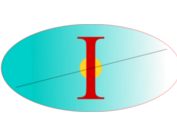Citation:
| chen2018overlapped.pdf | 1.43 MB |

Abstract:
The stochastic density functional theory (DFT) [R. Baer et al., Phys. Rev. Lett. 111, 106402 (2013)] is a valuable linear-scaling approach to Kohn-Sham DFT that does not rely on the sparsity of the density matrix. Linear (and often sub-linear) scaling is achieved by introducing a controlled statistical error in the density, energy, and forces. The statistical error (noise) is proportional to the inverse square root of the number of stochastic orbitals and thus decreases slowly; however, by dividing the system into fragments that are embedded stochastically, the statistical error can be reduced significantly. This has been shown to provide remarkable results for non-covalently-bonded systems; however, the application to covalently bonded systems had limited success, particularly for delocalized electrons. Here, we show that the statistical error in the density correlates with both the density and the density matrix of the system and propose a new fragmentation scheme that elegantly interpolates between overlapped fragments. We assess the performance of the approach for bulk silicon of varying supercell sizes (up to Ne = 16 384 electrons) and show that overlapped fragments reduce significantly the statistical noise even for systems with a delocalized density matrix.



